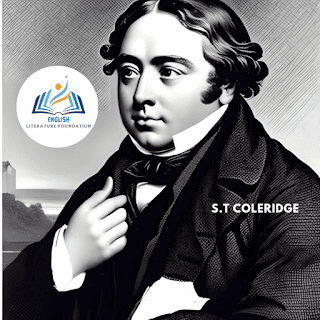The Romantic
Revolution: How Imagination and Passion Shaped an Era
The Power of
Romanticism: A Journey Through the Artistic and Literary Revolution
The Romantic Era: Unleashing the Imagination and Changing the World
Introduction:
The Romantic Period was a cultural and artistic movement that originated in Europe during the late 18th century and peaked in the mid-19th century. It was a time of great social, political, and economic change, as well as a period of intense artistic experimentation and innovation. The Romantic movement was characterized by an emphasis on individualism, imagination, emotion, and the natural world. In this article, we will explore the history, literature, and art of the Romantic period.
1. Historical Context:
The Romantic period was a time of great political and social upheaval, which had a significant impact on the literature and art of the era. The French Revolution, which began in 1789, was a major turning point in European history and inspired many Romantic writers and artists to explore themes of social justice and political freedom. The Industrial Revolution, which began in England in the late 18th century, also had a profound effect on the Romantic movement, as it brought about significant changes in the way people lived and worked.
2. Romantic Literature:
The Romantic period saw the emergence of some of the greatest poets and writers in the English language. Writers such as William Wordsworth, Samuel Taylor Coleridge, John Keats, Percy Bysshe Shelley, and Lord Byron all wrote during this time and produced some of the most iconic works of literature in history. The Romantic writers rejected the formalism of the Enlightenment and instead emphasized individual expression, emotion, and the beauty of nature. They explored themes such as love, nature, imagination, and the supernatural.
Some of the most significant works of Romantic literature include:
- Poetry: Romantic poets such as William Wordsworth, Samuel Taylor Coleridge, Percy Bysshe Shelley, and John Keats wrote some of the most famous poems of the era. Their works often dealt with themes of nature, love, and the supernatural, and were characterized by their use of vivid imagery and emotional intensity.
- Prose: Romantic prose includes novels, short stories, and essays. Some of the most famous Romantic novels include Mary Shelley's "Frankenstein," Charlotte Bronte's "Jane Eyre," and Emily Bronte's "Wuthering Heights." These works often dealt with themes of passion, individualism, and the power of the imagination.
- Drama: Romantic drama often explored the supernatural and the mysterious, and was characterized by its emphasis on emotion and individualism. Some of the most famous Romantic plays include "Faust" by Johann Wolfgang von Goethe and "Manfred" by Lord Byron.
- Non-fiction: The Romantic period also produced significant non-fiction works, such as William Hazlitt's essays on literature and society, and John Ruskin's works on art and architecture.
- Gothic literature: The Romantic period saw the emergence of Gothic literature, which was characterized by its emphasis on the supernatural, horror, and mystery. Some of the most famous Gothic novels include Mary Shelley's "Frankenstein," Bram Stoker's "Dracula," and Edgar Allan Poe's "The Fall of the House of Usher."
Overall, Romantic literature had a significant impact on the literary world and has influenced many writers and artists throughout history. Its emphasis on emotion, imagination, and individualism continues to inspire modern literature and art.
3. Romantic Art:
The Romantic period was also a time of great artistic experimentation and innovation. Artists such as J.M.W. Turner, John Constable, and William Blake all created works that celebrated the beauty of nature and the individual imagination. Romantic art was characterized by a focus on emotion, the imagination, and the sublime. It often depicted scenes of nature, such as landscapes and seascapes, and often included elements of the supernatural or fantastical.
4. Music:
The Romantic period was also a time of great innovation in music. Composers such as Ludwig van Beethoven, Franz Schubert, and Frederic Chopin all created works that reflected the Romantic spirit. Romantic music was characterized by a focus on emotion and individual expression, as well as a rejection of the formalism of classical music. It often included elements of folklore and nationalism, as well as a fascination with the supernatural and the sublime.
5. Legacy and Influence:
The Romantic period had a significant impact on the culture and art of the 19th century and beyond. It inspired many later movements, such as Symbolism and Aestheticism, and had a lasting influence on literature, art, music, and even politics. The Romantic emphasis on individual expression, emotion, and imagination helped to pave the way for modernism and postmodernism, and continues to influence artists and writers today.
Conclusion:
The Romantic period was a time of great artistic and cultural experimentation and innovation. It was a time of intense passion, emotion, and imagination, and saw the emergence of some of the greatest writers, artists, and composers in history. The Romantic emphasis on individualism and the beauty of nature helped to shape the modern world and continues to inspire artists and writers today.

